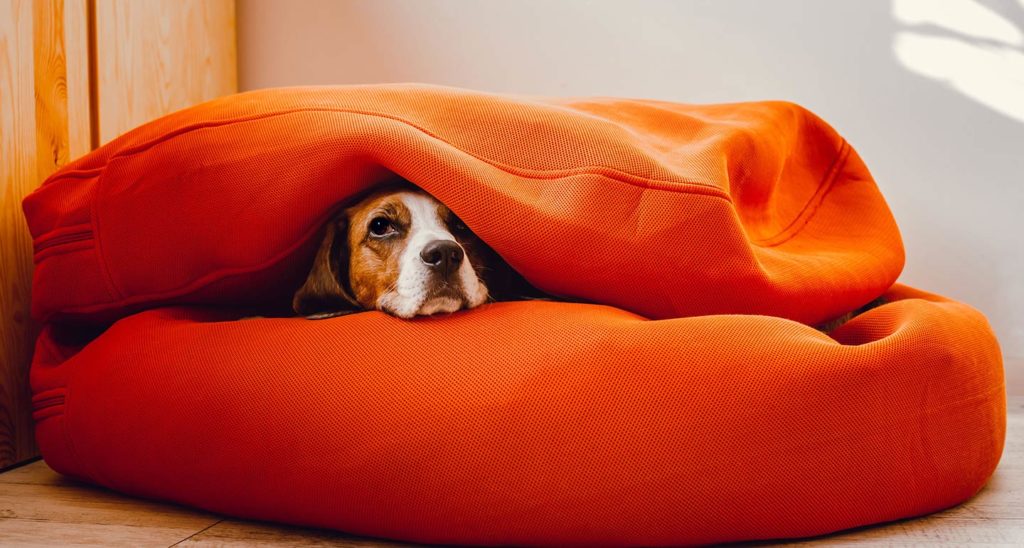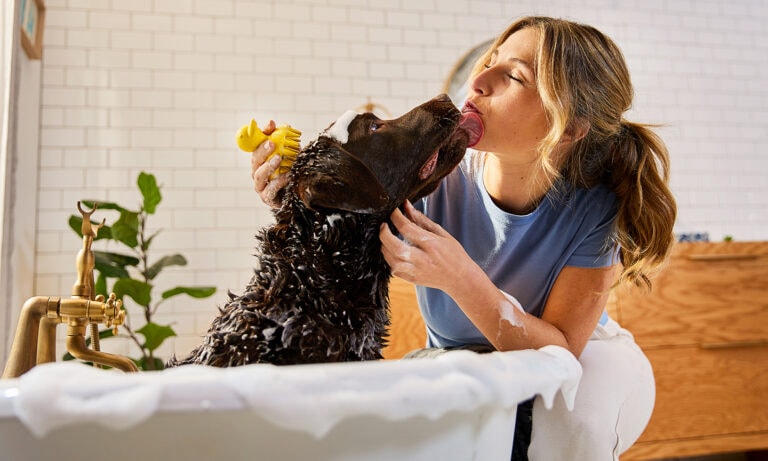For the past few weeks, our world as we know it has been put on pause. Routines have shifted or even disappeared. We’re at home ... all the time. Some people are working harder than ever, while others have no work at all. And while most pets are probably loving the extra family time, many are picking up on our stress and starting to show signs of anxiety, as well.
“Cats and dogs listen to our voice, watch our body language and absorb our emotions," says Liz Bales, VMD, a veterinarian and cat behavior expert. "The more anxious and stressed we are, the more they feel it. To some extent, their sensitivity to our emotions is a valuable part of the human animal bond.”
The signs of stress in pets can be easily confused with other illnesses, so speak with your veterinarian if you notice any of the following signs:
1. Loss of appetite, retching, increased stool production, or diarrhea
2. Excessive shedding or overgrooming
3. Panting or excessive vocalizing
4. Increased sleeping or hyperactivity
5. Destructive behavior
6. Accidents in the house
7. Acting especially clingy or avoidance
To prevent stress for your pets, board-certified veterinary behaviorist Dr. Amy Pike suggests sticking with a routine that is similar to what you normally engage in.
“Get up, get dressed like you’re going to work or school," she says. "If your pet is crated or confined for departures, make sure they still have some time in their crates every day, too.”
If possible, leave the house for a while each day so the pets are still accustomed to you being gone. For each departure, don’t over dramatize the exit or return. Pike recommends to “only reward calm interaction and ignore attention seeking behavior."
If you are seeing increases in anxiety related behaviors, here are a few suggestions:
1. Ensure your pet is receiving enough physical exercise (doesn’t hurt our stress levels, either!).
2. Provide adequate mental enrichment in the form of positive reinforcement-based training on a daily basis, and utilize feeder toys, puzzle toys and play time.
3. For cats, use your time at home to transition them to a new routine of hunting for multiple small meals, split both day and night.
Dr. Pike believes that “there is a distinct possibility that many of our dogs (and some cats) will experience a level of separation anxiety once the world returns to normal and we all return back to work and school after having been home with them for so long.” She suggests pet parents video their pets while they’re home alone to ensure low-level signs of anxiety aren’t being missed. If you do see things like whining, crying, pacing, panting or destructive behavior, a consultation with a veterinary behaviorist or certified separation anxiety trainer may be required.
If significant signs of anxiety are noted now, Dr. Bales suggests talking with your veterinarian. “They can talk with you about your specific concerns and solutions that are reasonable to fit into your life," she says. "In some instances, your veterinarian may even prescribe medication that can help!”
Stress can affect all of us, two-legged and four. But by recognizing the signs, and finding what works to manage them, we can all breathe a little easier—together.
Share:









